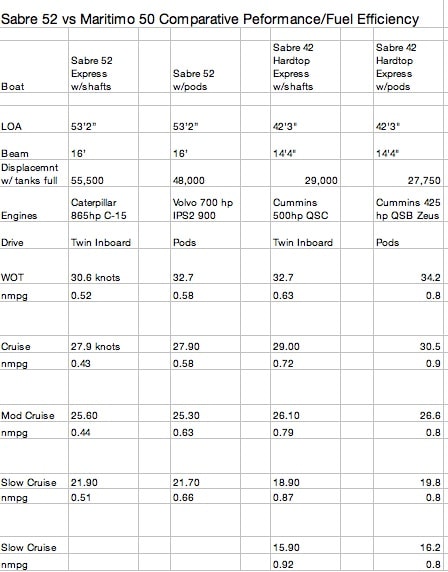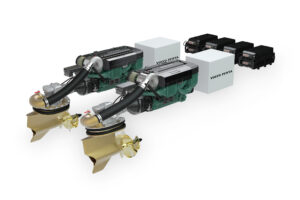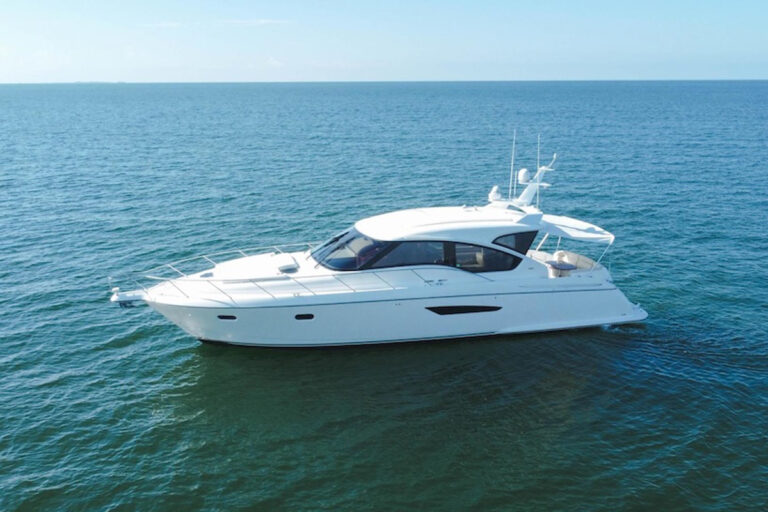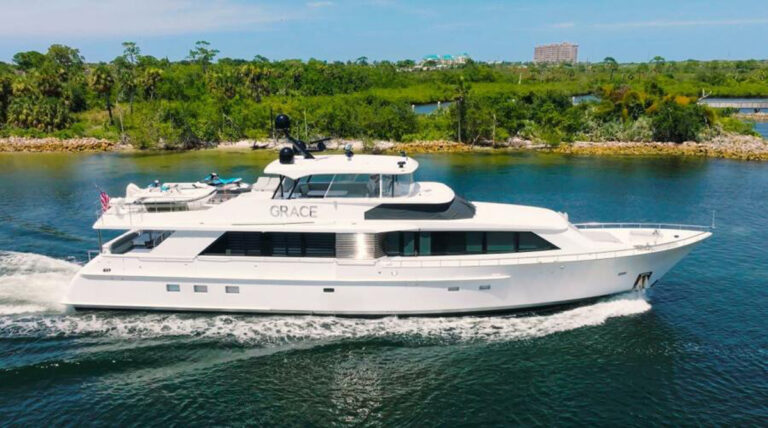Contra-Rotating Propeller Efficiency
Four to eight percent of the energy coming off a single prop spins like a corkscrew, wasted. A slightly smaller prop behind the first and careful attention to how those props interact recovers that rotational energy and converts it to forward thrust. Pods also allow props to bite into clean water farther from the hull. Smaller props on pods also reduce draft — from 3 feet 9 inches with shafts down to 3 feet 4 inches with pods on the Sabre 42.

Heavy Lifting
Greg Platzer headed surface ship propeller design for the U. S. Navy through most of the Cold War. Now he designs custom propellers for yachts and sport-fishing boats that can cost five figures, but often pay for themselves in fuel savings (www.platzermarine.com). Platzer says that changing from a 10-degree shaft angle on inboards to zero shaft angle of pods gains about eight percent efficiency. But at slower speeds those downward-pointing props lift the stern, tipping the advantage toward conventional shafts.
The reason for that lift is simple. Imagine a very simple propeller with four flat blades set at a 45-degree angle to the propeller shaft. If that prop shaft is flat to the surface of the water, then all four blades attack the water at the same 45-degree angle and provide equal, constant thrust. But with that shaft inclined 15 degrees, the blade rising from down deep up toward the hull is only attacking the water at 30 degrees from horizontal — pulling the boat forward — while the blade turning down, away from the hull, is at 60 degrees — pushing the stern up. With pods’ zero shaft angle, the blades are at equal angles in relation to the water through their entire revolution, so they thrust the boat forward without lifting the stern.
_ Find out more about pod drives._









